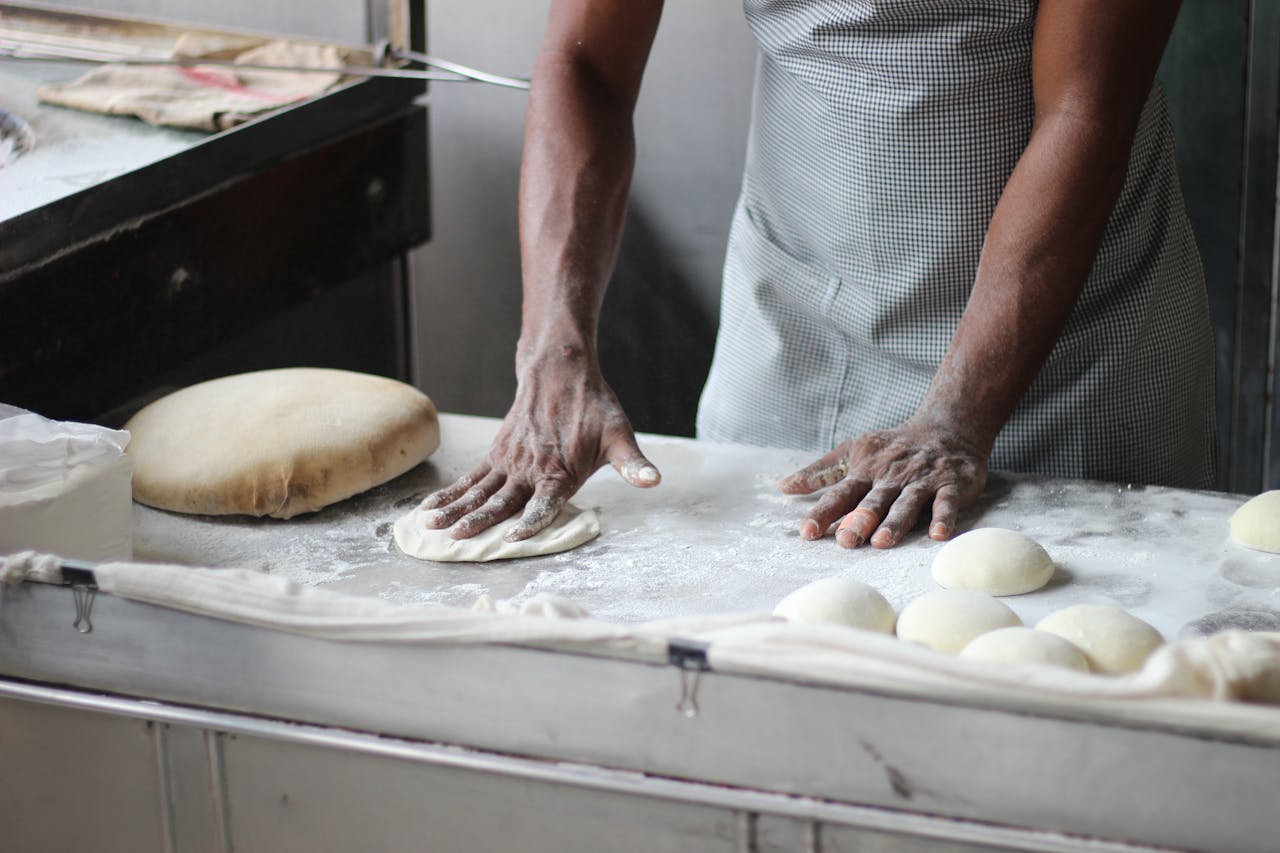A bakery within a restaurant, more than just an appealing concept, can be an effective business strategy. Whether you’re a restaurant owner seeking to diversify your menu, or a baker aiming to expand your market, incorporating a bakery in a restaurant can be a promising idea. However, one of the major challenges you might encounter is the limitation of space. No worries. With careful planning and strategy, you can turn that confined area into a bustling baking hub that churns out mouth-watering baked goods.
Planning your Space
Before starting your bakery, the first step is to plan your space. A well-thought-out plan will not only help you maximize your limited space but also ensure a smooth flow of operations.
Topic to read : What are effective ways to train bar staff on new cocktail recipes?
Foremost on your plan should be the layout of your kitchen. Given the limited space, it’s crucial to create a functional layout that streamlines the baking process. You might be preparing dough on one side, baking in the middle, and packaging at another side. The goal is to prevent bottlenecks and ensure that your bakers can move around efficiently.
Another aspect to consider in your plan is your equipment. Bakery equipment can be bulky. You need to decide which machines are essential and find ways to fit them into your space. If you’re tight on space, consider investing in multi-purpose machines.
Additional reading : How do you ensure compliance with food hygiene regulations in a mobile catering service?
Lastly, consider your display area. As a bakery, your baked goods are your star attraction. Create a display area that makes your products visible and attractive to your customers. Your display area should be inviting, making customers want to try your offerings.
Sourcing Efficient Equipment
Baking requires various equipment – from ovens to mixers, proofers, and more. With a limited space, you have to be smart in choosing your tools. Aim for equipment that’s not only reliable but also maximizes your space and efficiency.
Multi-purpose equipment can be a lifesaver in a small bakery. For example, a combination oven can act as a convection oven, steamer, or both. This will save you the space of having separate equipment for each function.
Also, consider the size of your equipment. Choose compact models that are specifically designed for small spaces. Remember, while it’s essential to have all the necessary tools, it’s equally vital to maintain a workspace where your bakers can efficiently work.
Structuring a Bakery Menu
A well-planned menu can significantly help in managing your limited space. You might be tempted to offer a wide array of baked goods, but doing so requires more ingredients and equipment, hence more space.
Instead, focus on a select range of products that you can do exceptionally well. You can choose these based on the most popular bakery items or those that complement your restaurant’s menu. For example, if your restaurant specializes in Italian food, you could create an array of Italian bread and pastries.
By limiting your offerings, you can streamline your baking process, reduce the need for extra storage, and ensure the consistency of your products.
Marketing to Attract Customers
Your bakery’s success doesn’t only depend on the quality of your goods, but also on how well you attract customers.
Even if you have a small space, you can make it noticeable to your customers. Use clear signage, attractive displays, and good lighting. Ensure your bakery area is visible from your restaurant’s main area. If customers see the bakery and the baking process, they are likely to be enticed to try your baked goods.
In addition, run promotions that tie your bakery items and your restaurant menu. This will not only boost your sales but also provide a unique dining experience to your customers.
Adapting to Changing Market Trends
Lastly, it’s important to keep your bakery relevant by adapting to the ever-changing market trends. Many successful bakeries within restaurants stay ahead by constantly innovating their menu based on customer preferences and seasonal trends.
Moreover, consider the health and wellness trend that has swept the food industry. Offering options such as gluten-free, sugar-free, or vegan baked goods can help you attract a wider range of customers.
In conclusion, starting a bakery within a restaurant, despite the limited space, can be a rewarding venture. With careful planning, efficient use of equipment, a well-thought-out menu, effective marketing, and adaptability, you can turn your small bakery into a big hit. Remember, it’s not the size of the space, but how you use it that counts.
Embracing Different Types of Bakeries
Incorporating a bakery into your restaurant doesn’t necessarily mean that you need to stick to the traditional floor plan or set-up of a commercial bakery. Your bakery business can take different forms that may suit your space and business model better while still producing delightful baked goods.
You could consider running a retail bakery where you produce and sell your baked goods on the premises. This model is advantageous in that it allows customers to experience the baking process first-hand. The aroma of fresh bread and pastries can be a potent tool for attracting customers.
Another option is a wholesale bakery. As a wholesale bakery, you would focus on producing large quantities of baked goods for sale to other businesses. If your restaurant is part of a chain or you have partnerships with other local businesses, this could be a viable option.
If your space limitations are extreme, you might even consider a bakery on wheels. A food truck bakery could be parked outside your restaurant, creating a unique attraction and effectively utilizing outdoor space.
Regardless of the type of bakery you choose to start, ensure that the necessary licenses and permits are in place. An open bakery is as much a legal project as a culinary one.
Utilizing Social Media to Boost Your Bakery Business
Given that your bakery is within a restaurant, it’s vital that you use every tool at your disposal to promote it. One particularly powerful tool that can help draw attention to your small business is social media.
Use platforms like Instagram to showcase your baked creations. Regularly post images of your tempting baked goods, your bakery layout, and your baking process. This will not only create interest but also gives your followers a behind-the-scenes look at how their favorite treats are made.
You should also consider running special promotions on your social media accounts. For instance, you could offer a discount to customers who share a picture of their bakery purchase, or run a contest where the winner gets a free pastry with their next meal.
Moreover, social media is a great place to gather customer feedback. Listen to what your customers are saying about your baked goods. This feedback can be invaluable in refining your menu and improving your offerings.
Conclusion
Starting a bakery within your restaurant, notwithstanding the limited space, might seem challenging initially, but it can indeed be a fruitful venture. A meticulous business plan, smart use of the bakery floor, strategic selection of bakery equipment, a curated range of baked goods, and savvy marketing strategies, especially through social media, can all contribute to the success of your bakery.
The key is to remain adaptable and receptive to changing trends and customer feedback. With time, your small bakery can become a major attraction within your restaurant, enhancing your customers’ dining experience and boosting your overall profitability. Remember, in the world of business, it’s not always about the size of your venture, but how effectively you run it. So, go ahead and start planning your bakery today!






